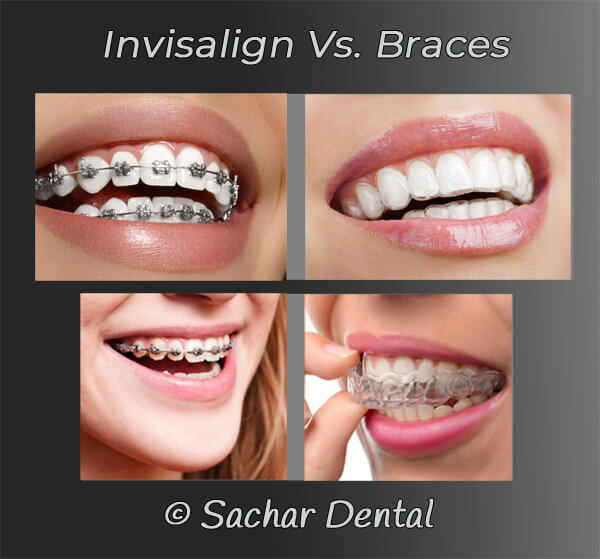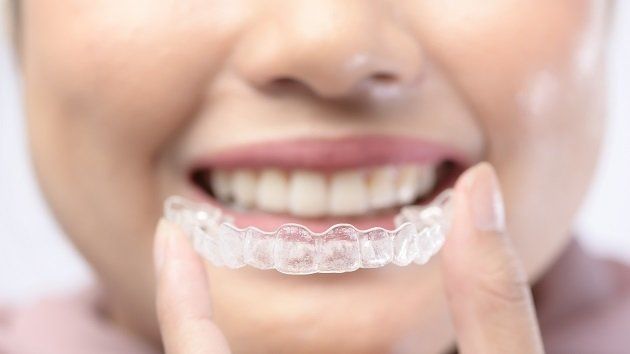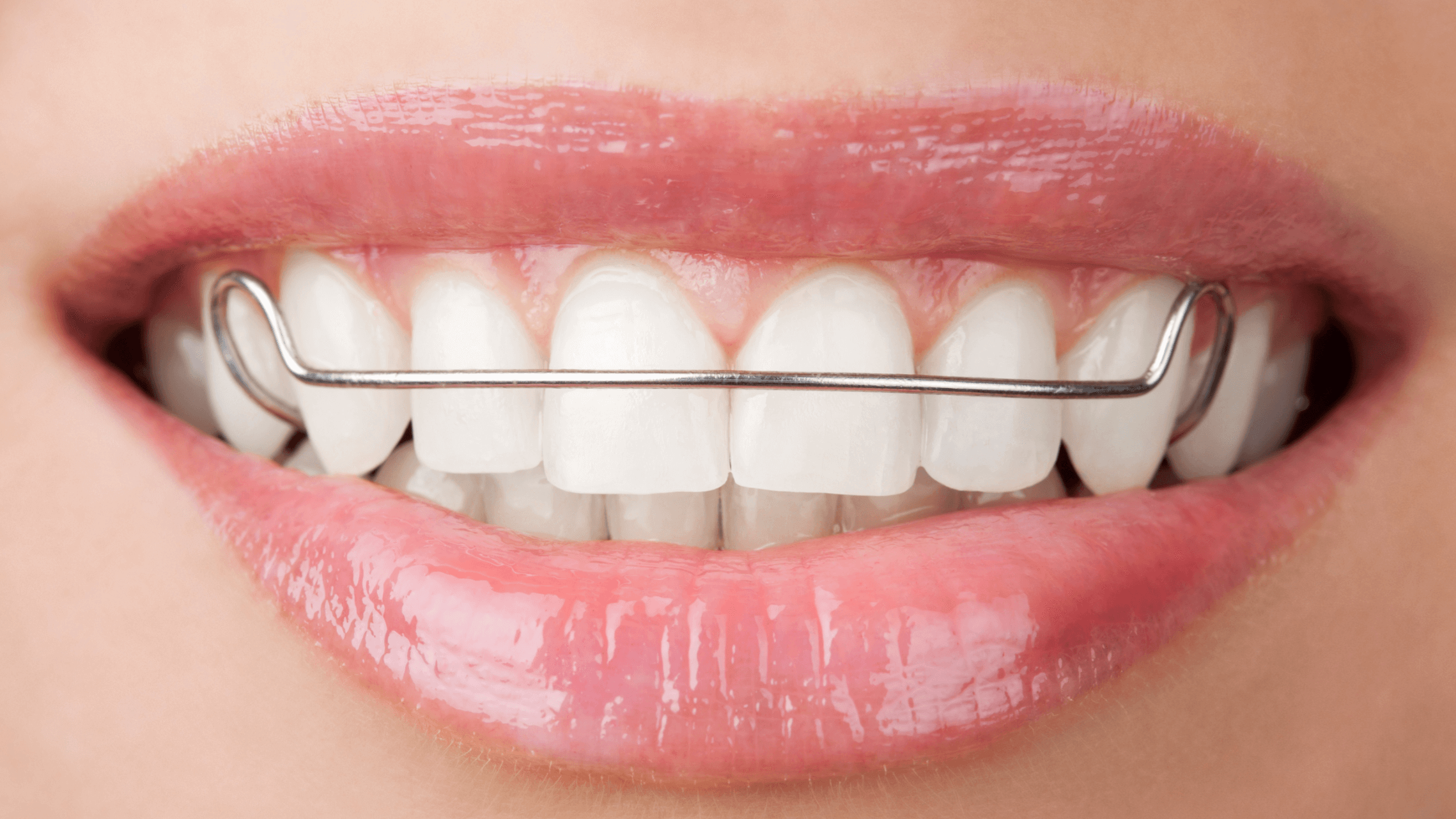Invisalign for Teens: A Modern Solution to Straightening Young Smiles
Invisalign vs. Conventional Dental braces: Which Option Is Right for You?
When thinking about orthodontic treatment, the selection in between Invisalign and standard dental braces presents several essential variables that warrant cautious evaluation. Invisalign offers a very discreet alternative with detachable aligners, while conventional braces provide a much more visible yet effective option for severe misalignment. Each option includes distinct benefits and downsides connected to aesthetic appeals, comfort, therapy period, and cost. Comprehending these nuances is crucial for making a notified choice that aligns with your individual choices and way of life. The inquiry stays: which alternative will finest fulfill your orthodontic requirements and assumptions?
Review of Therapy Choices

On the other hand, typical dental braces contain metal brackets and wires that are bonded to the teeth. This method uses continuous pressure with time to attain positioning. While efficient for complex orthodontic concerns, conventional braces call for regular gos to for adjustments and can present obstacles in preserving oral health due to the difficulty of cleansing about brackets and wires.
Both alternatives have their values, and the choice often pivots on certain dental problems, lifestyle preferences, and individual conformity. Inevitably, consulting an orthodontic professional is vital for figuring out the most ideal treatment strategy customized to private requirements. Comprehending the subtleties of each choice can dramatically influence the general success of orthodontic treatment.
Visual Considerations
A significant element influencing the selection in between Invisalign and standard braces is the aesthetic charm each treatment provides. Invisalign aligners are crafted from clear plastic, making them essentially unnoticeable when worn.
In contrast, typical dental braces contain metal braces and cords, which can be a lot more obvious. While advancements in orthodontic technology have brought about the advancement of smaller braces and tinted elastics, typical braces still keep an even more noticeable account. For some individuals, the presence of braces might prevent them from looking for needed therapy.
Ultimately, the choice between Invisalign and traditional dental braces may depend upon personal preferences concerning aesthetics. Clients that focus on discretion typically favor Invisalign, while those who are less concerned concerning exposure may decide for conventional braces. Comprehending the visual ramifications of each choice is vital for making an educated decision that lines up with one's lifestyle and preferences.
Convenience and Convenience

In regards to comfort, Invisalign aligners are removable, allowing clients to appreciate their favorite foods without constraint and preserve ideal oral health. Brushing and flossing are streamlined, as the aligners can be obtained during these routines, whereas conventional braces call for careful navigating around brackets and cables.
Furthermore, Invisalign's dynamic system enables less orthodontic gos to. Patients usually get numerous sets of aligners at the same time, which can simplify the treatment process and reduce time spent in the orthodontist's chair. On the other hand, conventional dental braces require normal modifications, making them much less practical for those with active schedules. Invisalign. Overall, the comfort and comfort of Invisalign make it an attractive choice for several individuals seeking orthodontic therapy.
Treatment Period and Effectiveness
While both Invisalign and traditional braces work in fixing dental imbalances, the duration of treatment can differ dramatically in between the 2 choices. Commonly, Invisalign treatment can take anywhere from 12 to 18 months, depending upon the intricacy of the case. The clear aligners work by slowly moving teeth right into their preferred positions, and routine follow-ups with an orthodontist help make sure progression continues to be on the right track.
In contrast, typical braces usually need a longer dedication, usually varying from 18 months to three years. This find out here now results from their fixed nature and using braces and cables, which can be more effective for complicated situations and extreme imbalances (Invisalign). The treatment performance of typical dental braces is well-documented, as they enable specific modifications and greater control over tooth motion
Eventually, the option in between Invisalign their explanation and standard braces may depend upon both the awaited treatment period and the particular dental problems handy. Consulting with an orthodontist is important, as they can supply tailored suggestions based upon individual needs, ensuring the selected technique straightens with desired results and timeframes.
Expense Comparison and Insurance Coverage Alternatives
Price plays a substantial function in the decision-making procedure for individuals taking into consideration orthodontic therapy, whether opting for Invisalign or traditional dental braces. On standard, the expense of Invisalign varieties from $3,000 to $8,000, while conventional braces commonly set you back between $2,000 and $6,000. Factors influencing these expenses consist of the complexity of the instance, the duration of therapy, and geographical location.
Insurance coverage can dramatically influence out-of-pocket costs. Several dental insurance policy plans offer partial protection for orthodontic therapies, yet the specifics can differ widely. It is critical for individuals to review their insurance policy policies to figure out the degree of coverage for either choice. Normally, traditional dental braces might be extra regularly covered by insurance policy plans compared to Invisalign, which some insurance companies categorize as a cosmetic treatment.
Furthermore, several orthodontic techniques use flexible repayment plans, making both therapy choices much more accessible. People ought to ask about potential financing alternatives and discounts for ahead of time payments. Evaluating the overall expense, consisting of insurance policy advantages and settlement plans, is essential for making an informed decision that aligns with both visual preferences and budget factors to consider.
&srotate=0)
Conclusion
In summary, the option between Invisalign and traditional braces hinges on numerous elements, recommended you read consisting of aesthetic choices, comfort, therapy period, and price. Invisalign supplies a discreet, detachable alternative that facilitates dental hygiene and dietary versatility, while standard braces may be better for complex dental issues and usually come with a lower price point. Eventually, examination with an orthodontist is vital to assess individual situations and determine the most ideal treatment choice for achieving optimum dental placement.
When taking into consideration orthodontic treatment, the selection in between Invisalign and typical braces provides several crucial elements that merit mindful examination.Comparing Invisalign and traditional braces exposes distinct treatment options for orthodontic adjustment.While both Invisalign and conventional braces are efficient in remedying dental misalignments, the duration of therapy can vary dramatically between the 2 alternatives.Expense plays a significant role in the decision-making process for individuals thinking about orthodontic treatment, whether opting for Invisalign or typical braces.In summary, the option between Invisalign and traditional braces hinges on numerous variables, consisting of visual choices, convenience, treatment period, and cost.